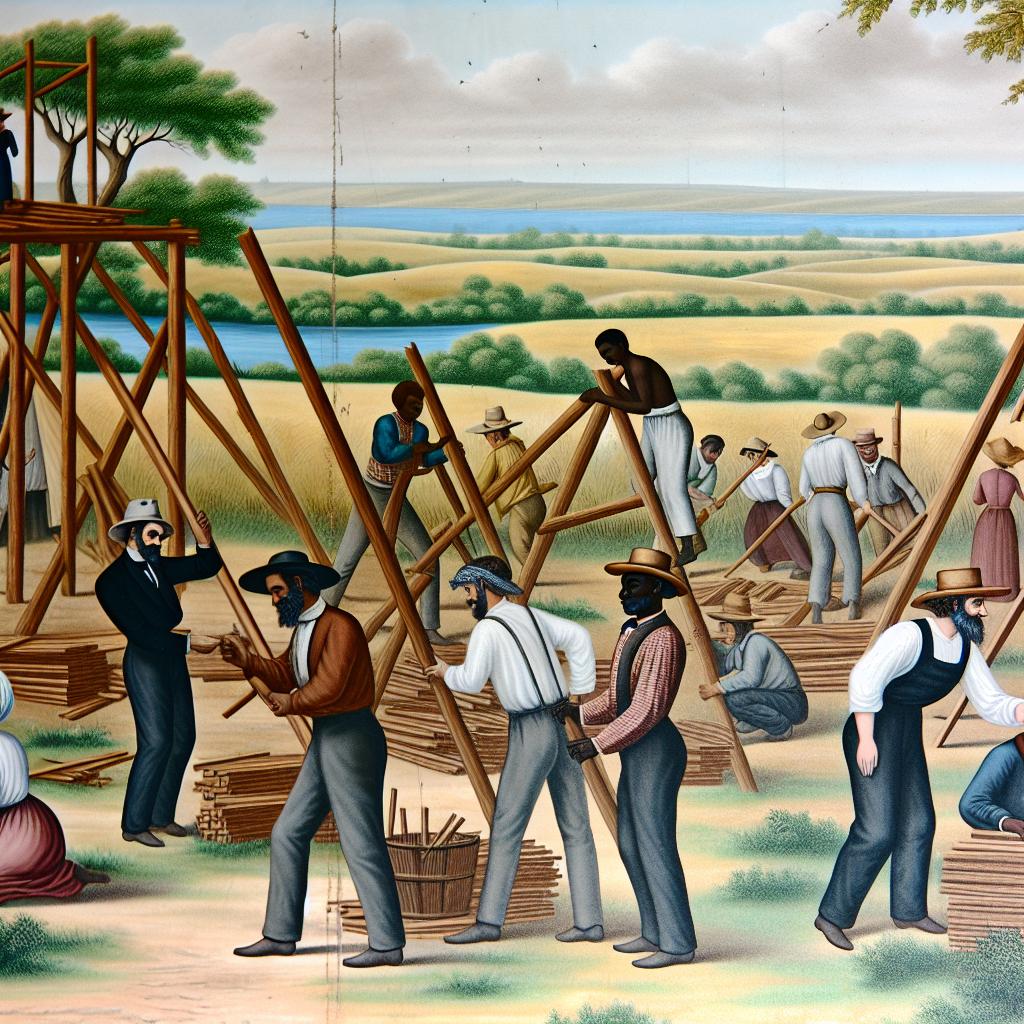The Founding of Wichita
The city of Wichita, situated in the heart of south-central Kansas in the United States, has a rich and storied past. Its origins are firmly planted in the history of the American West, beginning as a humble trading post that played a vital role in commerce between early settlers and the native tribes of the region. Understanding the foundation and growth of Wichita provides insights into its transformation from a nascent settlement to a thriving urban center.
Early Inhabitants
Long before European settlers arrived, the region where Wichita now stands was home to various Native American tribes. Among them were the Wichita people, from whom the city derives its name. This tribe was particularly known for their unique grass-thatched houses and lifestyle that closely integrated with the land. The Wichita people engaged in farming, hunting, and trading, contributing significantly to the rich tapestry of cultural and economic exchanges in the region before European influence expanded.
Significance of Geography
Wichita’s geographical significance is evident in its strategic position at the confluence of the Arkansas and Little Arkansas Rivers. This location was not only advantageous for agriculture due to the fertile soil found in the river basins but also made the area ideal for trade and transportation. The convergence of these rivers served as a critical junction for trading routes that stretched from the northern territories into the southern parts of the region. This geographical advantage drew both indigenous peoples and European settlers, fostering a bustling trading environment long before the formal establishment of the city.
The Chisholm Trail
A pivotal development in Wichita’s early growth was its location along the Chisholm Trail. This trail became one of the most important cattle-driving routes in the post-Civil War United States, facilitating the transport of cattle from Texas to Kansas railheads. As one of the crucial stops along the trail, Wichita saw an influx of cattle drives, and with them, the economic benefits that came from such activity. This bustling trade contributed significantly to Wichita’s economic foundation during these formative years.
Jesse Chisholm
The Chisholm Trail carries the name of Jesse Chisholm, a trader of Scottish-Cherokee descent, who established it as a major route for trade and transport. Wichita’s evolution into a flourishing “cowtown,” where cattle trading became a primary economic activity, was largely driven by its involvement with this trail. The trail linked Texas cattle ranches to the railroads of Kansas, amplifying Wichita’s economic prospects considerably. By fostering such a connection, Jesse Chisholm’s foresight and trading acumen played an instrumental role in Wichita’s early development.
Incorporation and Growth
Wichita’s official incorporation as a city on July 21, 1870, marked a significant transition. Moving from a trading post primarily concerned with indigenous and settler trade, it grew into an organized community complete with a municipal government. This move signaled the beginning of a more structured urban development process. Following incorporation, the city’s growth was fueled not only by the cattle trade but also by the arrival and establishment of railroads, which connected Wichita to broader markets and facilitated an influx of goods, people, and ideas.
Economic Expansion
The economic narrative of Wichita did not stop at cattle trading. By the late 19th and early 20th centuries, Wichita began diversifying its economic activities beyond its agricultural and trading roots. The city became a notable hub for aviation manufacturing in the 1920s, earning the proud nickname “The Air Capital of the World.” This transformation from agriculture and cattle to aviation marked a new era of economic expansion and diversification. It attracted a myriad of workers, entrepreneurs, and innovators, contributing to its dynamic urban development and population growth. Such diversification laid a solid foundation for Wichita’s enduring economic stature.
Conclusion
In conclusion, the story of Wichita—from its roots as a modest trading post to its evolution into a bustling city—is a testament to strategic geographical attributes, historical significance, and economic adaptation. The city’s placement along the vital Chisholm Trail and its natural resources provided the initial momentum for growth. Over time, this foundation allowed Wichita to capitalize on new opportunities, leading to its emergence as a key player in the aviation and manufacturing industries. This blend of historical elements and economic foresight underscores its growth and contemporary success. For those interested in further exploring Wichita’s vibrant history and development, local historical societies and archives offer extensive resources and insights into the city’s past and its impact on the broader region.

